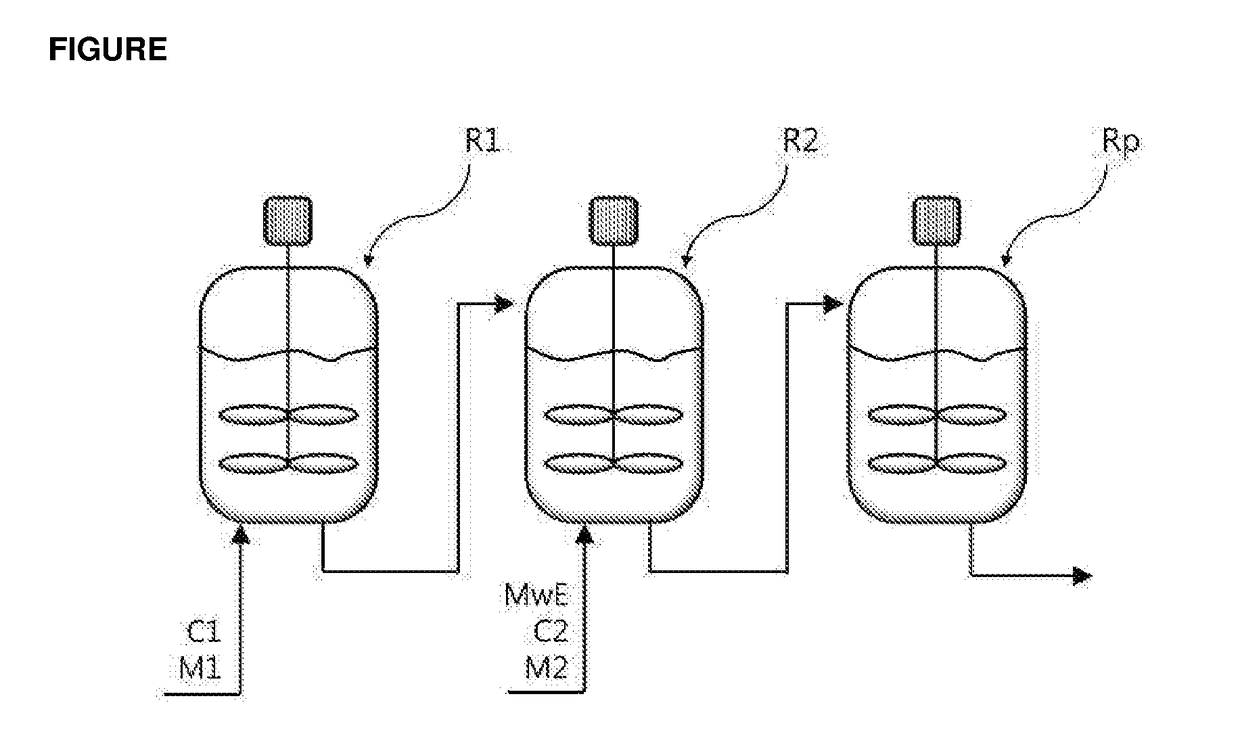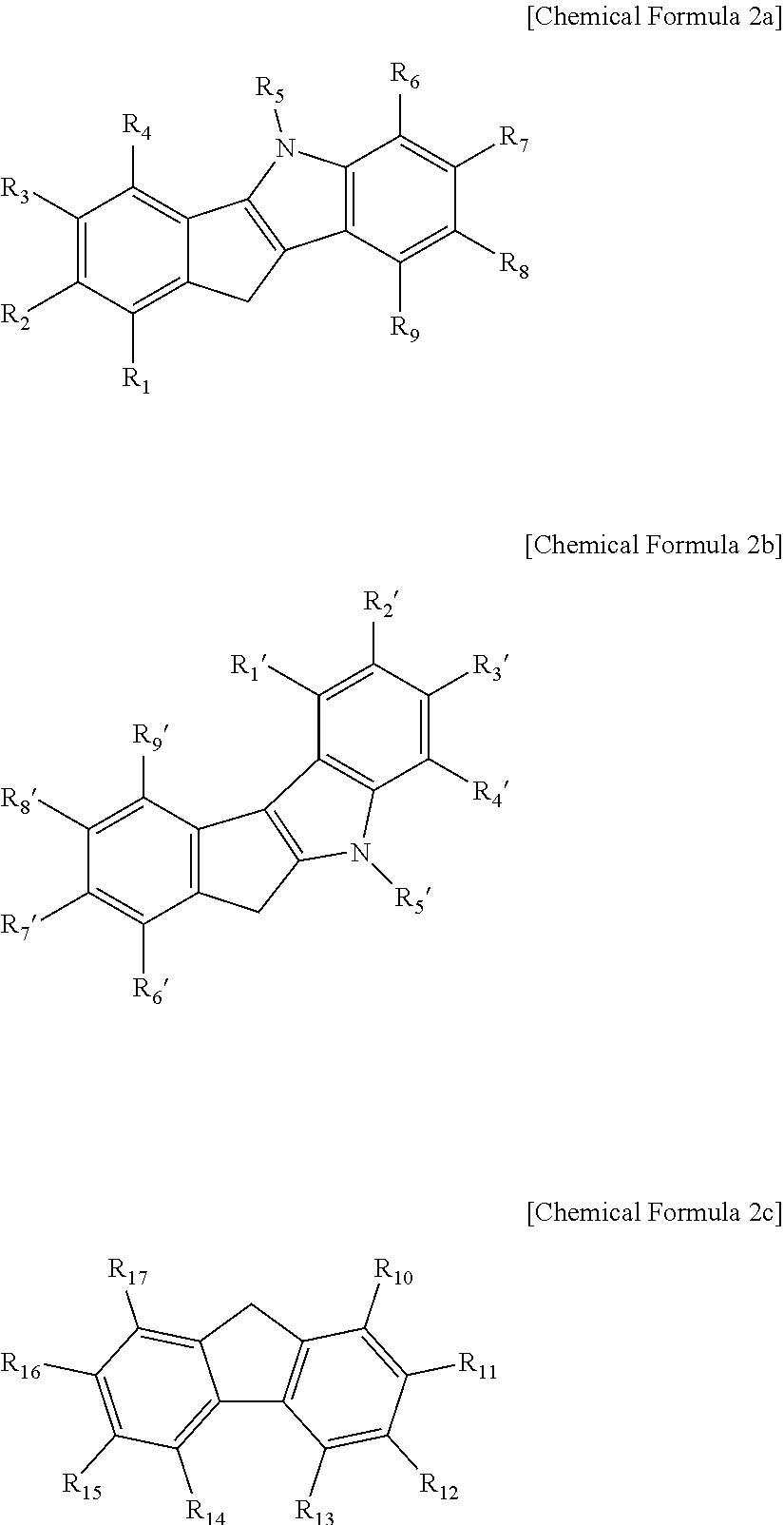HYBRID SUPPORTED METALLOCENE CATALYST AND POLYOLEFIN PREPARATION METHOD USING SAME (As Amended)
a metallocene catalyst and polyolefin technology, applied in the field of hybrid supported metallocene catalyst and polyolefin preparation method using same, can solve the problems of adversely affecting the product characteristics, and achieve the effect of improving the fnct characteristics of the produced polyolefin and reducing the amount of wax produced during polymerization of the olefin monomer
- Summary
- Abstract
- Description
- Claims
- Application Information
AI Technical Summary
Benefits of technology
Problems solved by technology
Method used
Image
Examples
preparation example 1
[0084]
[0085]1-1. Preparation of Ligand Compound
[0086]2 g of fluorene was dissolved in 5 mL of MTBE and 100 mL of hexane, and 5.5 mL of 2.5 M n-BuLi hexane solution was added dropwise in a dry ice / acetone bath and stirred at room temperature overnight. 3.6 g of (6-(tert-butoxy)hexyl)dichloro(methyl)silane was dissolved in 50 mL of hexane, and fluorene-Li slurry was transferred thereto under a dry ice / acetone bath for 30 minutes and the solution was stirred at room temperature overnight. At the same time, 5,8-dimethyl-5,10-dihydroindeno[1,2-b]indole (12 mmol, 2.8 g) was dissolved in 60 mL of THF, and 5.5 mL of 2.5 M n-BuLi hexane solution was added dropwise in a dry ice / acetone bath, and the solution was stirred at room temperature overnight. After confirming the completion of the reaction by NMR sampling of a reaction solution of fluorene and (6-(tert-butoxy)hexyl)dichloro(methyl)silane, 5,8-dimethyl-5,10-dihydroindeno[1,2-b]indole-Li solution was transferred under dry ice / acetone ba...
preparation example 2
[0091]
[0092]2-1. Preparation of Ligand Compound
[0093]2.63 g (12 mmol) of 5-methyl-5,10-dihydroindeno [1,2-b]indole was added to a 250 mL flask and dissolved in in 50 mL of THF. Then, 6 mL of 2.5 M n-BuLi hexane solution was added dropwise to dry ice / acetone bath, and the mixture was stirred at room temperature overnight. In another 250 mL flask, 1.62 g (6 mmol) of (6-(tert-butoxy)hexyl)dichloro(methyl)silane was dissolved in 100 mL of hexane, and then the solution was slowly added dropwise to a lithiated solution of 5-methyl-5,10-dihydroindeno[1,2-b]indole in dry ice / acetone bath, and the solution was stirred at room temperature overnight. After the reaction, the solution was extracted with ether / water and residual moisture of the organic layer was removed with MgSO4, and dried under vacuum to obtain 3.82 g (6 mmol) of a ligand compound, which was confirmed by 1H-NMR.
[0094]1H NMR (500 MHz, CDCl3): −0.33 (3H, m), 0.86˜1.53 (10H, m), 1.16 (9H, d), 3.18 (2H, m), 4.07 (3H, d), 4.12 (3H,...
preparation example 3
[0100]
[0101]t-Butyl-O—(CH2)6-Cl was prepared using 6-chlorohexanol by a method described in Tetrahedron Lett. 2951 (1988), and NaCp was reacted therewith to obtain t-Butyl-O—(CH2)6—C5H5 (yield 60%, b.p. 80° C. / 0.1 mmHg).
[0102]Further, t-Butyl-O—(CH2)6—C5H5 was dissolved in THF at −78° C., and normal butyllithium (n-BuLi) was slowly added thereto. The temperature was raised to room temperature, and the solution was reacted for 8 hours. The previously synthesized lithium salt solution was slowly added again to a suspension of ZrCl4(THF)2 (1.70 g, 4.50 mmol) / THF (30 ml) at −78° C. and then further reacted at room temperature for 6 hours.
[0103]All volatile materials were dried under vacuum, and hexane solvent was added to the obtained oily liquid material and filtered.
[0104]The filtered solution was dried under vacuum, and then hexane was added thereto to induce precipitation at a low temperature (−20° C.).
[0105]The obtained precipitate was filtered off at a low temperature to obtain a ...
PUM
| Property | Measurement | Unit |
|---|---|---|
| Time | aaaaa | aaaaa |
| Time | aaaaa | aaaaa |
| Time | aaaaa | aaaaa |
Abstract
Description
Claims
Application Information
 Login to View More
Login to View More - R&D
- Intellectual Property
- Life Sciences
- Materials
- Tech Scout
- Unparalleled Data Quality
- Higher Quality Content
- 60% Fewer Hallucinations
Browse by: Latest US Patents, China's latest patents, Technical Efficacy Thesaurus, Application Domain, Technology Topic, Popular Technical Reports.
© 2025 PatSnap. All rights reserved.Legal|Privacy policy|Modern Slavery Act Transparency Statement|Sitemap|About US| Contact US: help@patsnap.com



